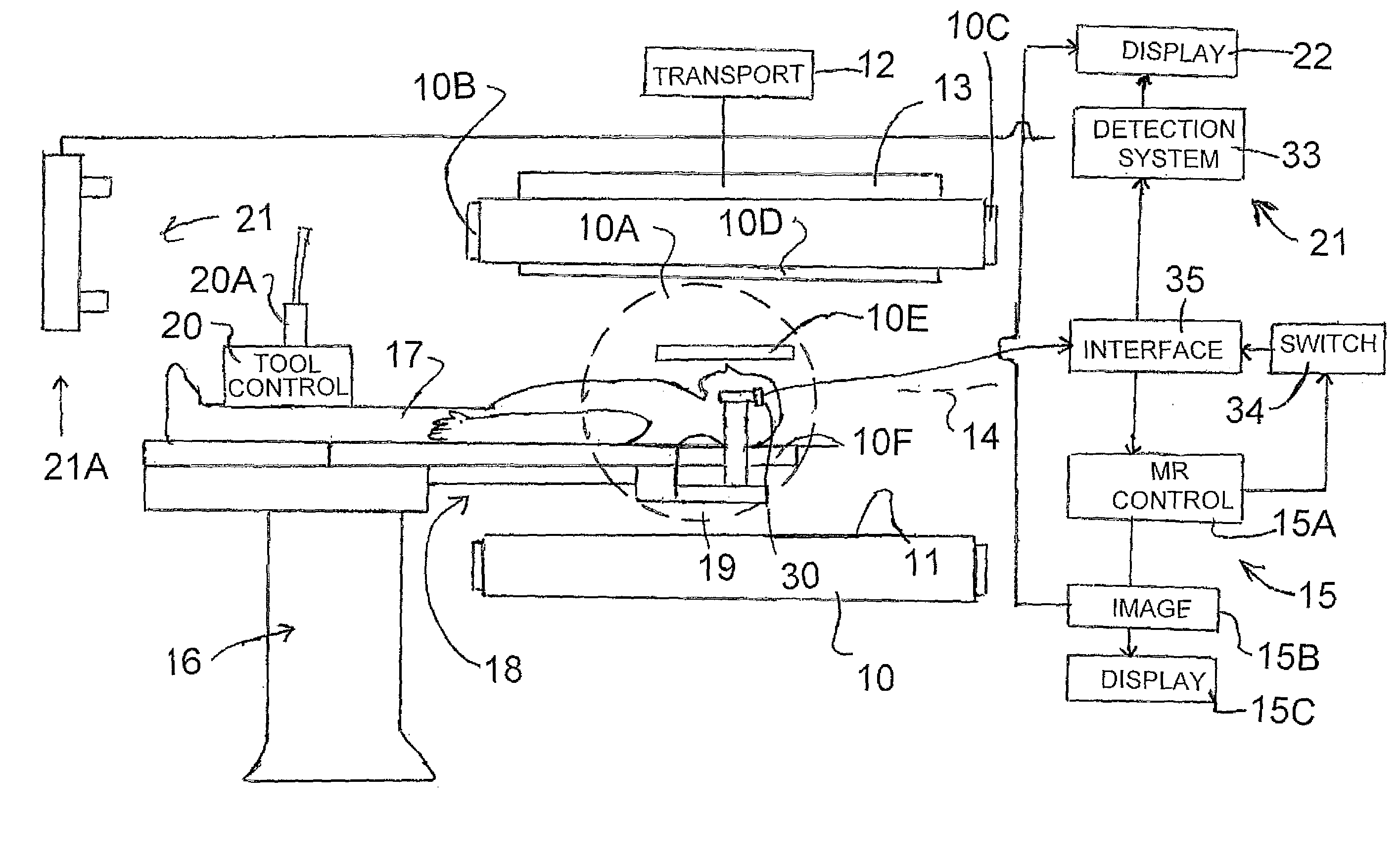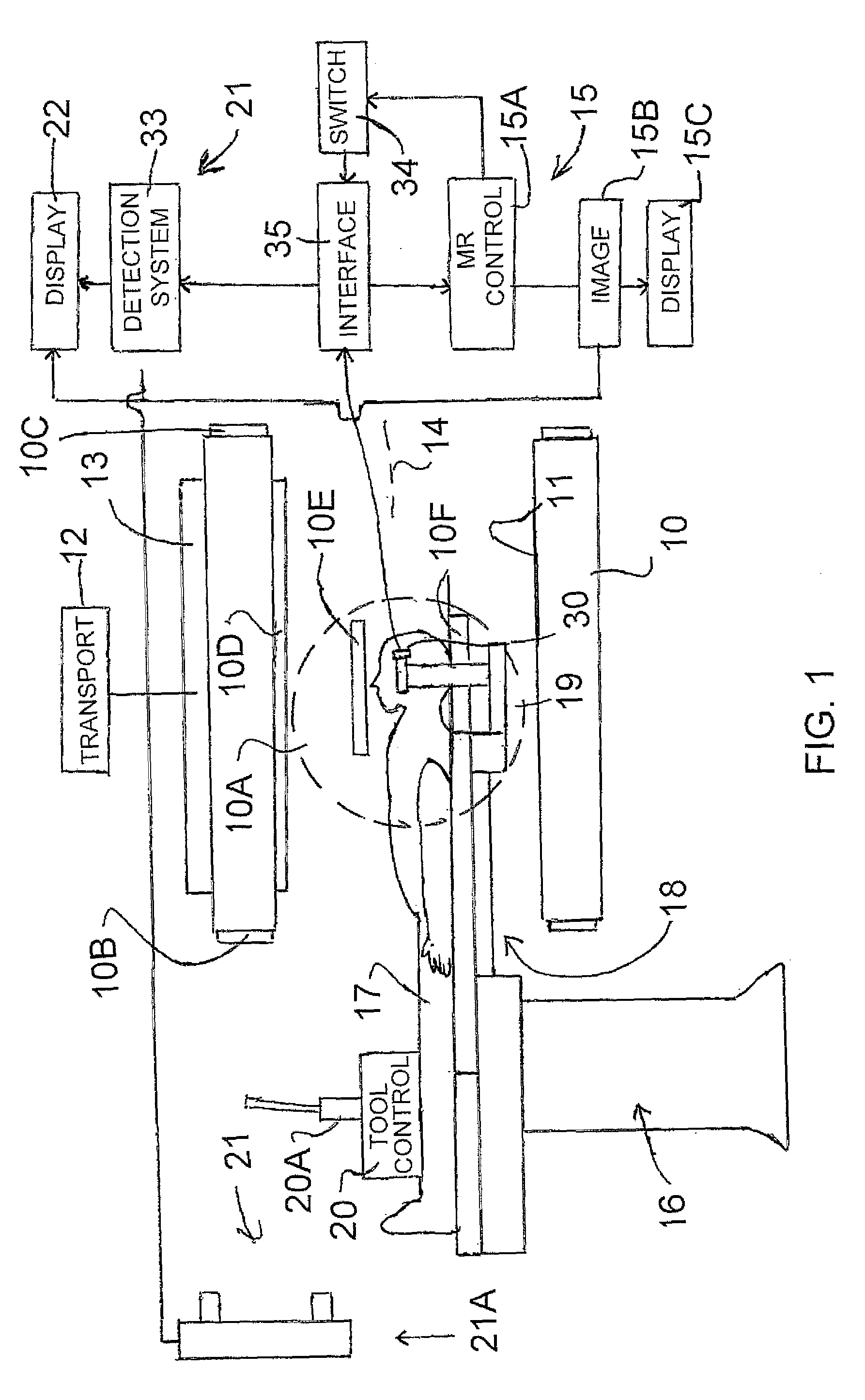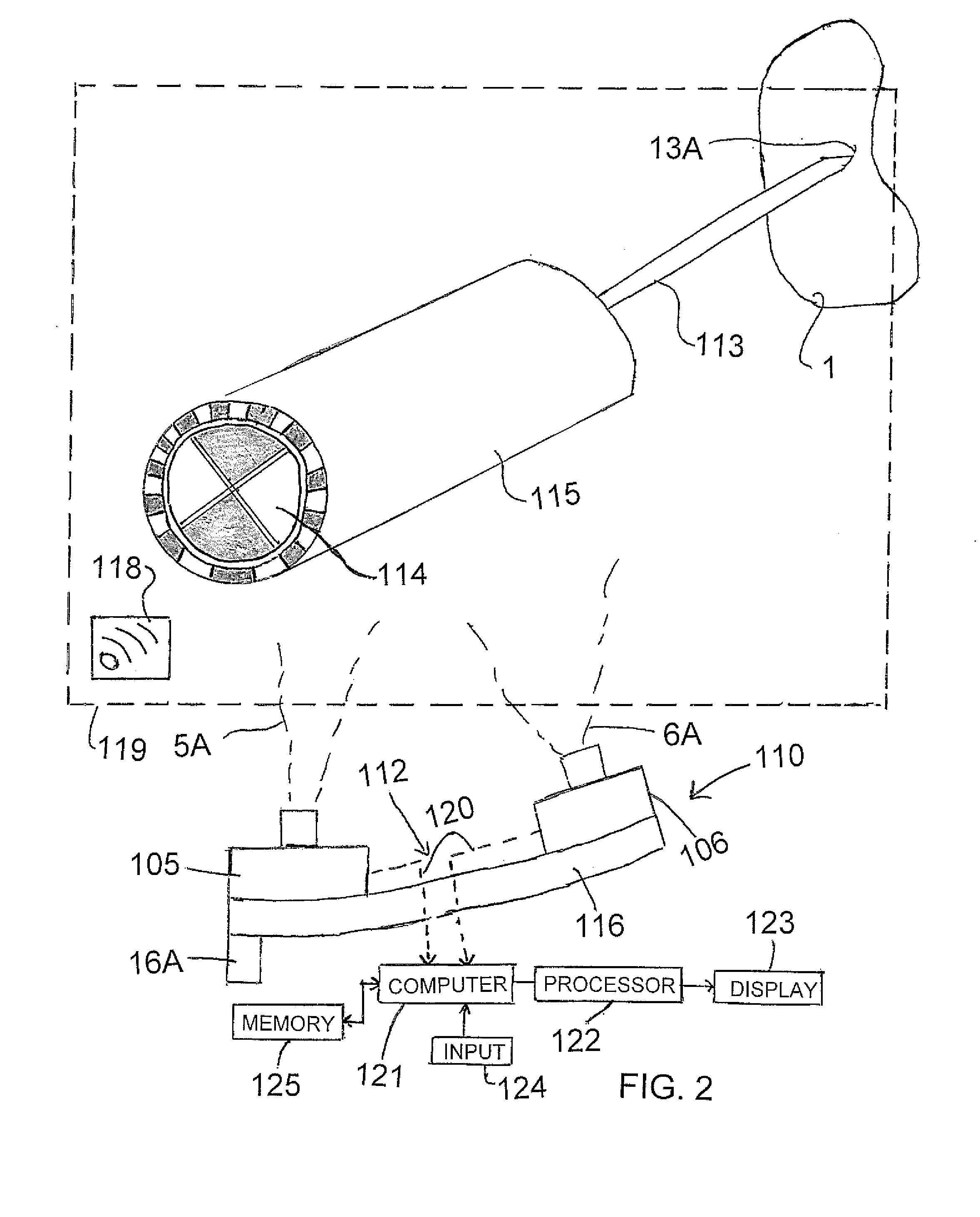Automatic registration of images for image guided surgery
a technology of image guided surgery and automatic registration, applied in the field of automatic registration of images for image guided surgery, can solve the problems of low probability of error leading to incorrect patient care, incorrect co-ordinate transformation, and inability to accurately identify the image, and achieve the effect of robust automatic marker recognition
- Summary
- Abstract
- Description
- Claims
- Application Information
AI Technical Summary
Benefits of technology
Problems solved by technology
Method used
Image
Examples
Embodiment Construction
[0129]In FIG. 1 is shown an intra-operative magnetic resonance imagining system of the type shown in U.S. Pat. No. 5,735,278 (Hoult) filed Mar. 15, 1996, the disclosure of which is incorporated herein by reference.
[0130]This system includes a magnetic resonance imagining component which includes a magnet 10 of the type including a generally cylindrical body defining a horizontal bore 11 where the magnet is carried on a track 12 on a suitable mounting assembly 13 allowing the magnet to be moved longitudinally along its axis 14. The remainder of the imaging system is shown schematically at 15 and the details of suitable magnetic resonance imagining systems are of course well known to a person skilled in the art so that no description is necessary here.
[0131]A patient operating table is indicated at 16 on which a patient 17 can be placed for the various procedures. The table is arranged so that it can enter the bore as the front end 18 of the magnet is moved longitudinally along the ax...
PUM
 Login to View More
Login to View More Abstract
Description
Claims
Application Information
 Login to View More
Login to View More - R&D
- Intellectual Property
- Life Sciences
- Materials
- Tech Scout
- Unparalleled Data Quality
- Higher Quality Content
- 60% Fewer Hallucinations
Browse by: Latest US Patents, China's latest patents, Technical Efficacy Thesaurus, Application Domain, Technology Topic, Popular Technical Reports.
© 2025 PatSnap. All rights reserved.Legal|Privacy policy|Modern Slavery Act Transparency Statement|Sitemap|About US| Contact US: help@patsnap.com



